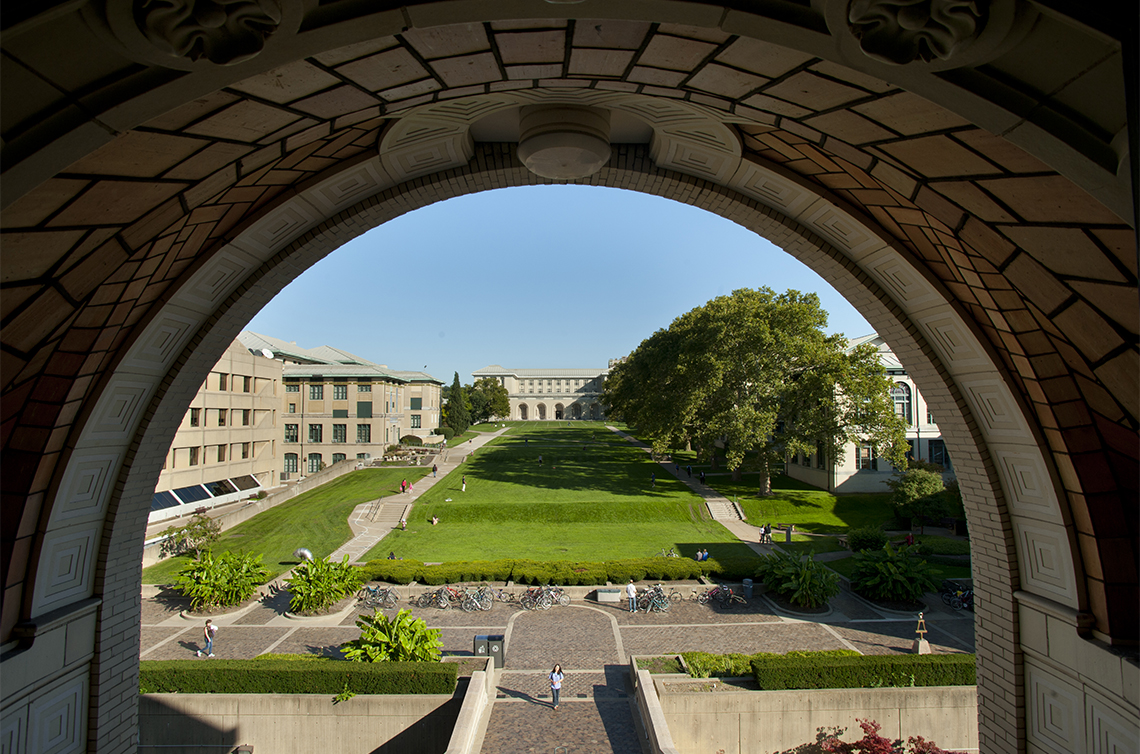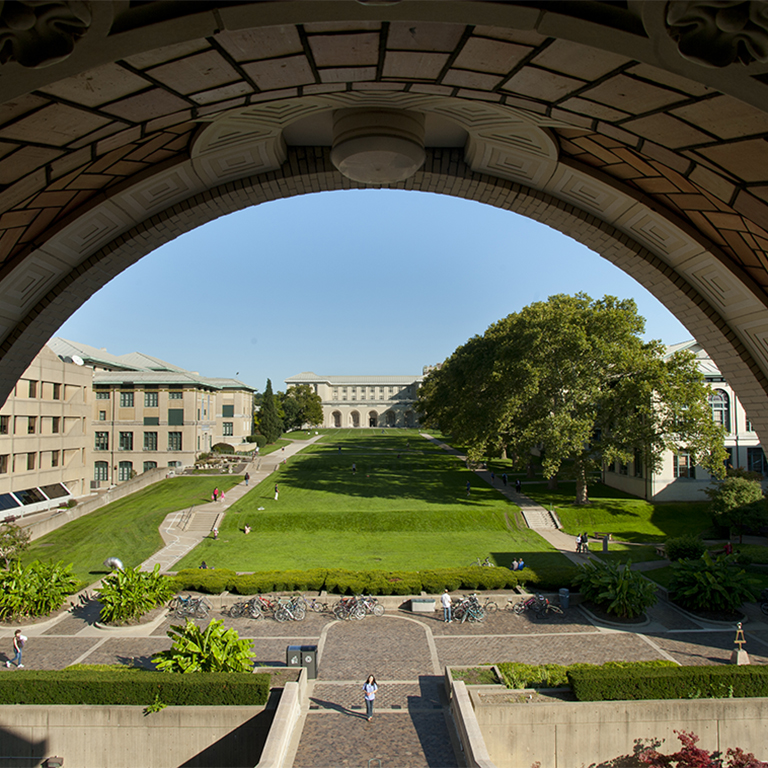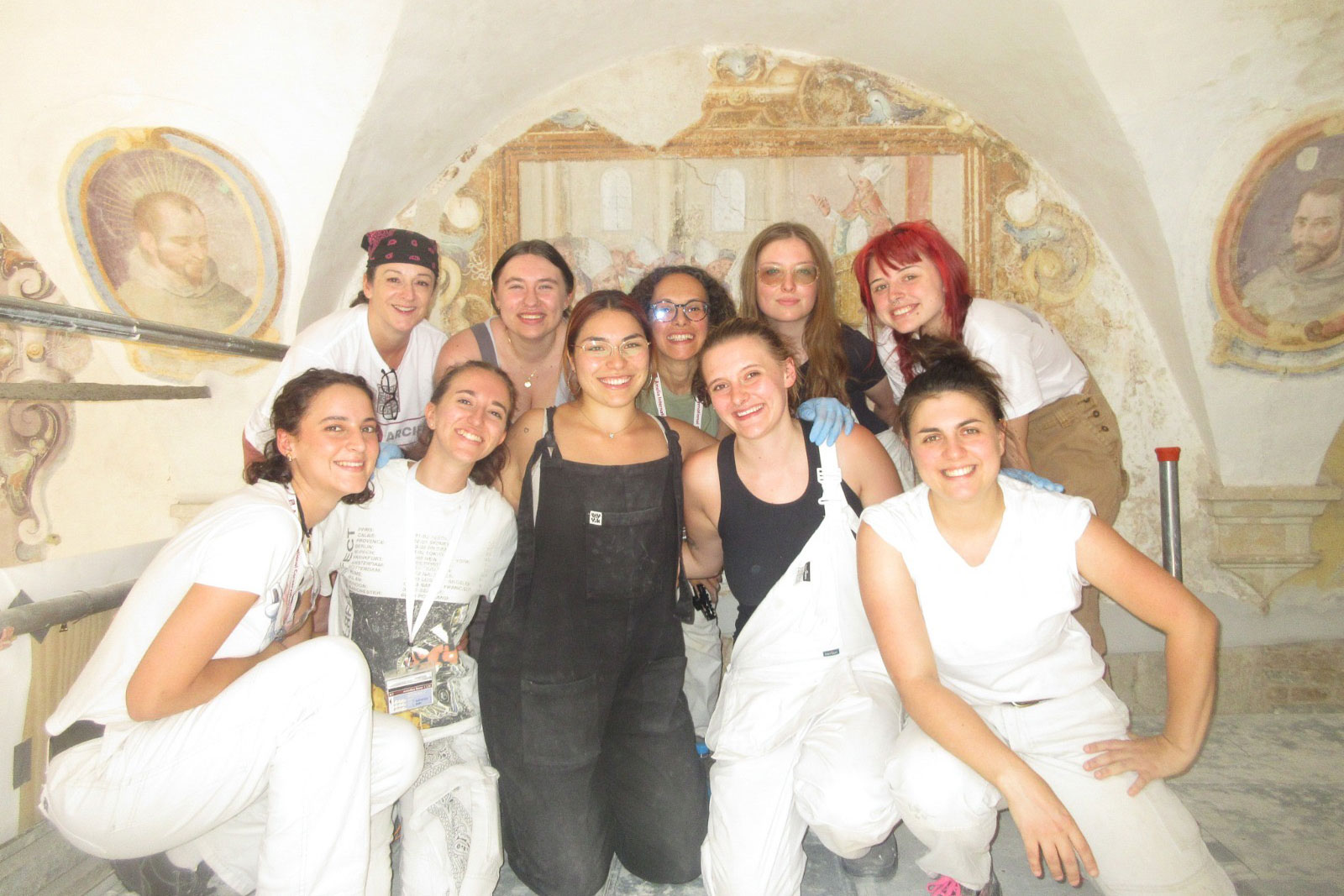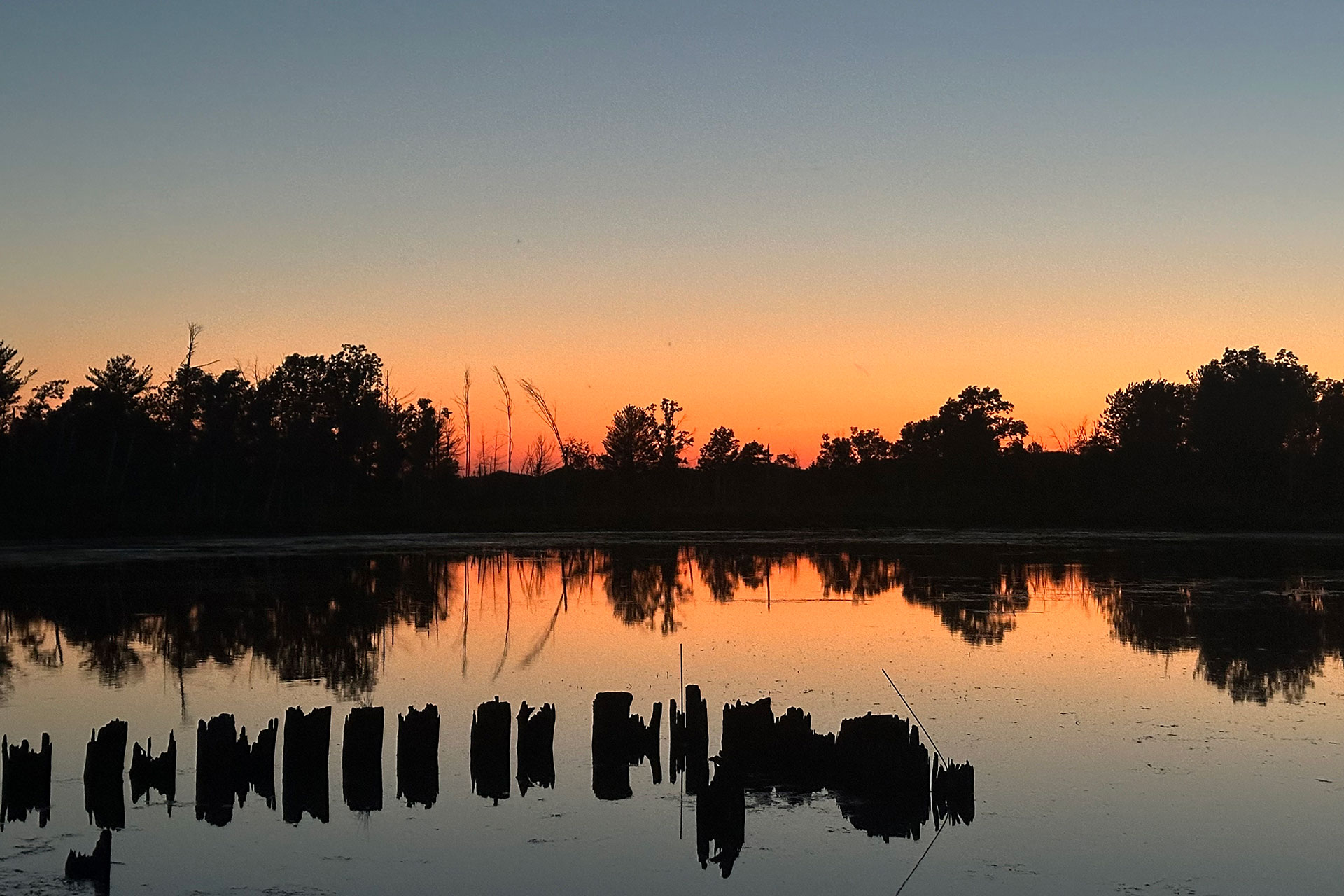
Summer residencies took Helena Starzec to Vermont Studio Center and Mo Nash to Ox-Bow in Michigan, while Jocelyn Harte spent her summer in Italy studying art restoration. All three rising seniors return to the School of Art with stories, friendships, and fresh perspectives on an art-centered life.
Where did you go this summer?
Jocelyn Harte: I attended The Art Restoration and Conservation International Field School in Amelia, Italy, for two months. I first restored the stone columns in the town hall courtyard, and later, the frescoes in the church cloister. Alongside active restoration, I have been attending lectures on restoration theory. Living in the 3,000-year-old town center, I got to know the locals and my classmates from all over the world (and the stray cats)! During my days off, I explored Italian towns, sketched in cafes, and participated in Amelia’s medieval festivities.
Mo Nash: I am at Ox-Bow School of Art, an artist residency in Saugatuck, Michigan, doing the fellowship program, which is a 14-week program where you work part time on campus. My studio space is on a lagoon in the Tallmadge Woods, on an open air porch. Every few weeks, we have a group critique with all the fellows and we have our own smaller group shows throughout the summer, with one large group show at the end. I was the first group of fellows to have our show, like three weeks into me being there. It’s a very intimate space where you’re interacting with the work, and it feels really genuine and authentic in a special way.
Helena Starzec: I had the pleasure of spending time as a fellow at the Vermont Studio Center. I got to live and work with a cohort of roughly 30 artists and writers on the VSC campus in Johnson, VT. I ate lunch and dinner with that group everyday, meeting people from a variety of backgrounds (I was the youngest) and life experiences — I especially enjoyed meeting mid- or later-career artists from around the world. We spent some warmer days hiking or visiting swimming holes. I became a regular at the only cafe in town and the gas station next to the converted schoolhouse my studio was in.
Your summer in three emojis:
MN: 🐢🥳🔥 (Samson, the 76-year-old snapping turtle, lives under the dock. I go and feed them hot dogs a lot.)
HS: 🥬🖼️🧾
JH: ☀️🪨🐈
How did the experience change your art practice?
JH: This experience widened my understanding of historical art practices, especially in the relationship between artwork and museums. This has made me even more curious about the life cycle of an artifact. I spent much of my time sketching sculptures and medieval architecture, paying attention to all of the unique modifications and deterioration patterns. Spending so much time restorating has made my appreciation for art grow as a valuable piece of culture. It has reinvigorated my artistic path and curiosities. It also made me realize the many career paths open in the art world.
HS: I immediately had to realize I couldn’t do as much work as I wanted or planned to do. Therefore I ended up focusing on the sort of themes I was interested in at the end of my junior year, which was kind of Geneva Bible related for lack of a better word. I had a lot of time to contemplate though, especially when I got lunch with our visiting artist Jean Shin. She was kind enough to talk to me about updating artist statements and my concerns about pigeonholing myself.
MN: I’ve been meeting so many amazing artists, because 50 new artists come in, like, every two weeks. That alone is really changing my approach to art, because I’m just learning about so many different ways of living in the art world and what it means to be an artist for people at different stages of their lives. I also got to TA for a class called Queer Craft, and that experience has really solidified that I want to pursue education of some kind.
What’s one memory you’ll never forget?
HS: Toward the end of the residency I agreed to go on an afternoon hike with three other friends. I’d gone on another hike a few days ago so I was feeling cocky about my abilities, even though this was Mt Mansfield which is the highest in Vermont, and two other people going were experienced hikers. There were many times on the long journey to the top where I kept thinking I should just lie down for them to find me later, but I held my own and somehow made it up. We stopped at a dead quiet local restaurant on the way back and staggered back to campus later probably smelling like death. It was a really gratifying experience even though those people probably saw me at my worst.
MN: One of my favorite things is sitting at the toast bar in the kitchen, where there’s a bunch of different spreads. At night, it’ll be really late, and all the fellows and some of our friends around campus will come and eat toast together before we go to bed. Being able to say goodnight to everyone is really sweet.
JH: Every year, Amelia has a medieval festival/competition where the five neighborhoods compete in various activities. After coming from a day trip in Assisi, I accidentally joined one of the parades. This somehow ended in me and my friend volunteering to work at one neighborhood’s medieval tavern. I became friends with a lot of 13 year old Italian servers and older cooks who spoke very little English. My Italian improved a lot and I got a lot of free delicious food. They were all very warm and eager to share their Italian culture! More closely related to art, my class got a tour from the Vatican vice director. Saw hidden rooms and secrets behind the rope. Toured the stone restoration laboratories too!
What’s something you’re really glad you packed?
JH: My watercolors! When I have time, I like to sit down and paint.
HS: I bought a denim jacket in Burlington the day I arrived because the forecast was basically 45 degrees and raining the first week or so I was there. This is kind of a boring pick but honestly I underpacked in many ways and spent a lot of time at the little art supply store in town. I guess I’m also glad I invested in a big jug of gesso before coming — and a staple gun.
MN: A lot of different kinds of shoes, because, with the weather, I needed different shoes for different occasions. My studio practice changed a lot this summer, too, where I started working with wood, like chiseling and carving, whereas usually I’m into soft materials and my feet usually are not as well protected as they should be.












